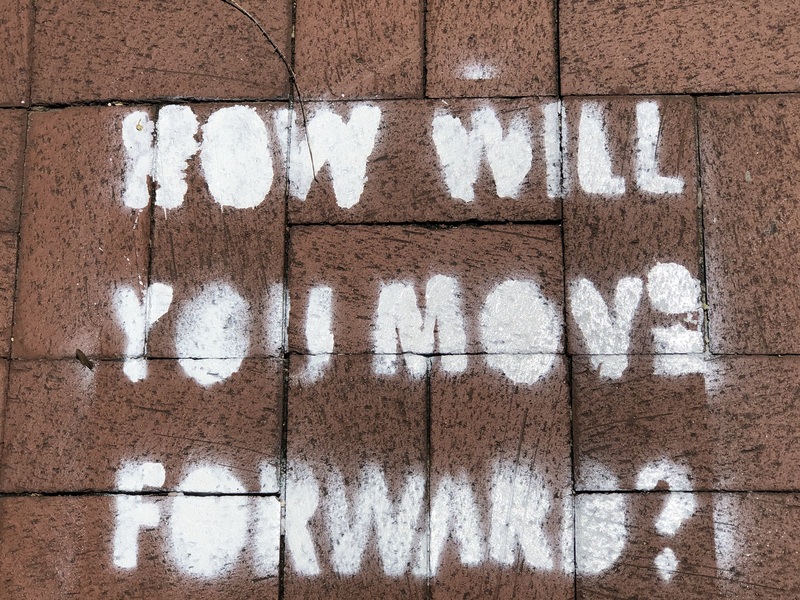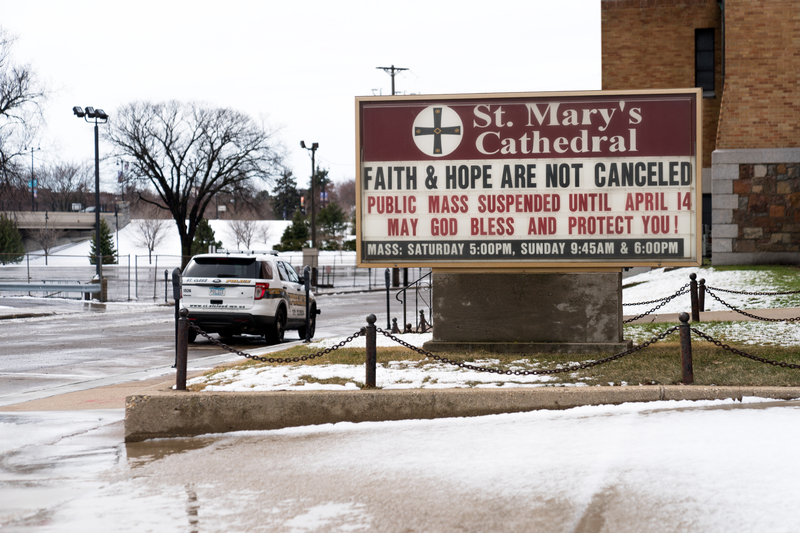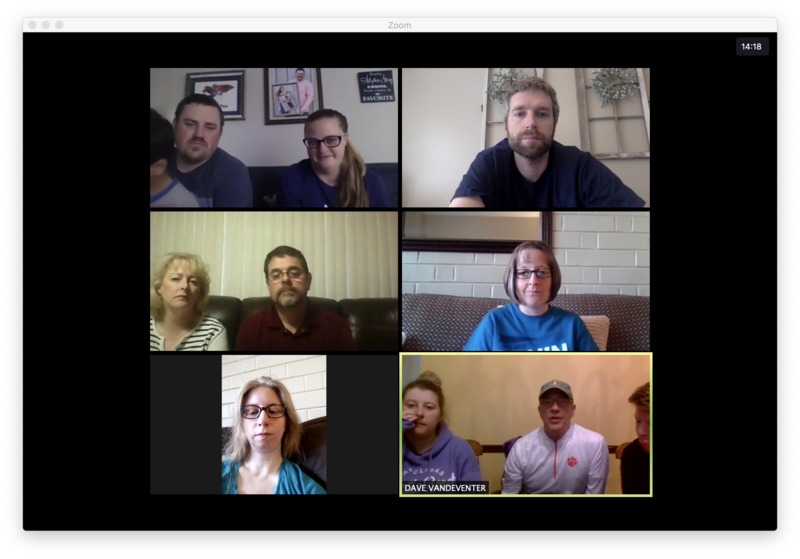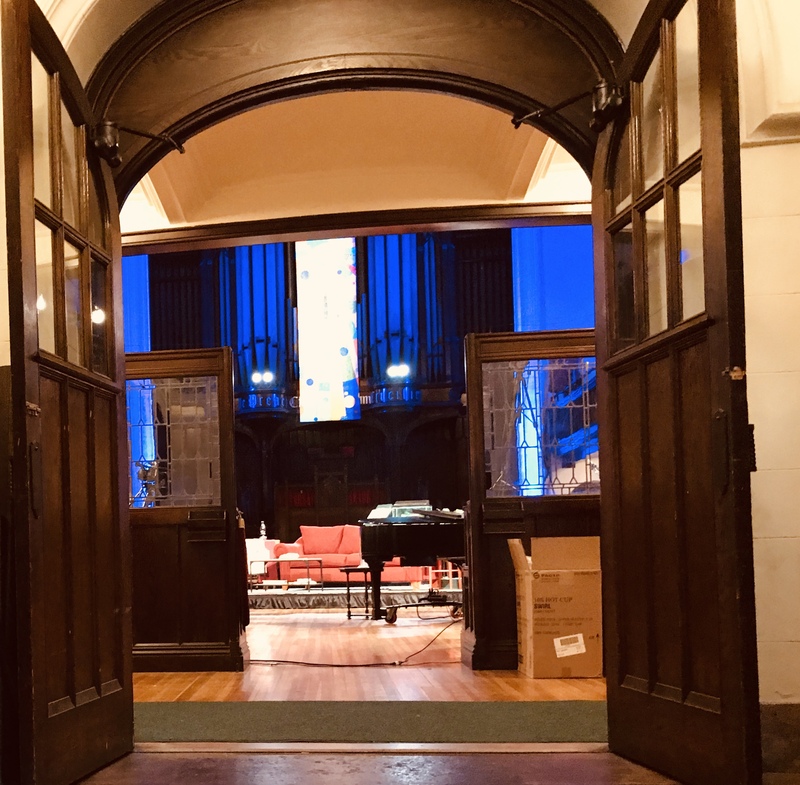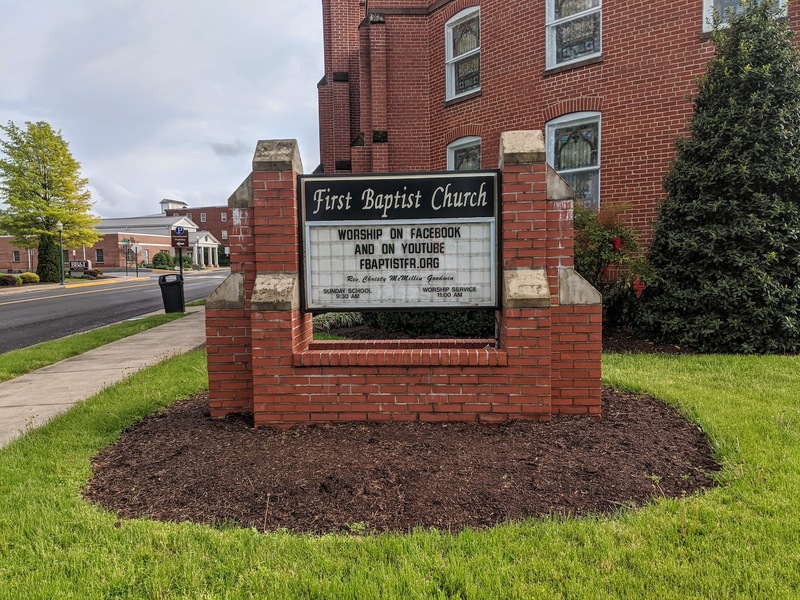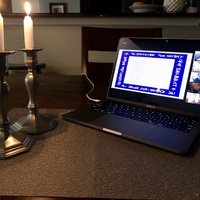Congregation, Community, and COVID-19
By Jess Pritchard-Ritter
December 2020
The COVID-19 pandemic has taken the world by storm this year, challenging communities across the globe to adapt and adjust, to empathize, to keep mentally and physically well, and to think on their feet. As the pandemic continues to unfold, religious institutions are learning, in real time, how to navigate the emotional spectrum that goes hand in hand with a global crisis, all while trying to maintain social connectivity so that their congregations don’t lose touch with each other and with humanity as a whole.
In times of crisis, many people turn to religion for emotional comfort, physical support, community, and hope, and the COVID-19 pandemic is surely no different. But how, exactly, do religious institutions provide such outreach and support during a global pandemic? This exhibit explores some of the challenges that religious institutions have identified and the ways in which they are moving forward as they try to spread hope, keep the faith, and support their communities during the COVID-19 pandemic.
Keeping the faith
This past spring came fast and furious to many across the country, including religious institutions, which found themselves closing their doors quickly in response to the escalating spread of COVID-19. In doing so, they were left figuring out how to move forward while also keeping their congregations safe. And, arguably most importantly, they were left figuring how to maintain hope in a moment of overwhelming hopelessness.
Some institutions encourage their congregations to simply let go. Sometimes it takes a crisis to realize that no one is ever really in control - everyone's lives are in God’s hands, always. It may be a shocking pill to swallow since so many are hard-wired to control, to plan, to act, and then to wash, rinse, repeat their way through life. In his piece, "Hope in the Time of Coronavirus," Brett Younger, the Senior Minister at Plymouth Church in Brooklyn, New York, says, "This is one of those moments when you realize you are not in control."
So where does that leave religious institutions? Even though congregations sought ways to reliquish control to God, they also sought ways to take action amidst the pandemic. Congregations still have each other, their neighbors, their communities, their friends, their families. Life may have changed quickly and suddenly this year, but religious institutions encouraged their congregations to find refuge in God and in our communities. Rabbi David Spinrad from the Beth El Hebrew Congregation in Alexandria, Virginia, wrote in an essay on March 19, 2020: "We surrender as an act of giving over, so we can recognize where we end and where the limits of our power give way to a Higher Power. God needs us as partners, but the Eternal never asks us to carry the burden entirely or alone. We are not alone. We have God and we have each other."
In this same essay, Rabbi Spinrad talks about the Hebrew word, chesed, which often describes love and kindness, but he says the definition is far greater and more powerful: "Chesed is strong. It is resilient, not romantic. Chesed is the love born of our shared humanity that commands us to remember and act on this truth: We are all in this together. Chesed will carry us through." Despite the loneliness and hopelessness that many congregations have felt throughout the COVID-19 pandemic, many religious leaders have kept the faith by spreading hope – hope that this moment won’t last forever, hope that their congregations are not alone, hope that God’s in control, hope that congregations can grow (both individually and communally).
In her blog post, "Giving Up Church for Lent," Claude Scales, a member of Grace Church Brooklyn Heights in New York, says, "The COVID-19 crisis may seem to be an impediment to our ability to act collectively, as it prevents us from physically gathering together. […] Still, it does allow us to work together for the good, even if we must be physically separated. Let us do so, until this crisis has passed, as I fervently hope and pray it will soon." While the news may be overwhelming at times, goodness prevails time and time again, and communities ban together to support each other, help each other, love each other, and show kindness to each other.
Mark E. Diehl, Interim Pastor at Grosse Pointe Memorial Church in Grosse Pointe Farms, Michigan, talks about truth driving hope and how these "two very basic human needs" are carried out every day by ordinary people putting their best foot forward and being there for their communities. Diehl says that the actions of these ordinary people "are tied directly to the hope and truth demanded by the reality of this moment." There are good things happening all around, so to hang on to these moments of goodness is to hang on to hope and to "embody the love of God."
Circling back to Brett Younger, who talks about the current crisis being an opportunity for personal growth: "This crisis is a terrible, painful, and dangerous opportunity to grow. We can become more like the people we hoped to be. We can be better for each other as we go through the worst. And when the worst is over, what lasts will be our love for each other." How, though? Look for and focus on the positive that’s happening in the community and beyond. When possible, help the community, no matter how small. And above all else, a little gratitude can go a long way, so try to seize "moments of gratitude."
One of the many key takeaways from the items that the Pandemic Religion project has collected is that communities are in this pandemic together and their congregations are not alone. However, with social distancing, how have religious institutions remained connected while maintaining social distance?
Redefining community
Before looking at how religious institutions have changed their operations to work around the COVID-19 pandemic, consider first the traditional idea of “community” and why the temporary suspension of in-person worship services created such a void for so many congregations.
A college student from Missouri talks about their experience of finding a religious community while in college and how this community has helped them stay connected during such a stressful time: "[W]hen I found out that there was a non-denominational Christian group that continued to worship even amidst COVID, I really wanted to go and see what is was all about. I am happy that I went because now I have met so many new people in my community that share the same beliefs as I do, and we have really connected and became close friends. Being a member of this group almost gives me a sense of being grounded and being at peace." Many find comfort and peace in their religious community and the loss - no matter how temporary - has created loneliness and a palpable void in many congregations.
However, the message of social distance not meaning spiritual distance can be seen across the country as religious institutions spread hope and faith in God, and in doing so, rechannel the physical isolation to spiritual intimacy with God. For instance, one user talks about the feeling of closeness to a “higher being” despite listening to the Catholic Church’s Easter worship service on an iPhone:
The lack of in-person fellowship was a palpable loss for many religious communities. Dr. Kenny Baldwin, the pastor at Crossroads Baptist Church, who survived a severe case of COVID-19 in March, gave a powerful and emotional sermon about how true fellowship is with the Father and his son, Jesus Christ. In his sermon, he talks about the interconnectedness of fellowship and relationships:
Still missing the fellowship with their community, some congregations employed the suddenly-popular Zoom to connect, get creative, and have a little fun, like holding a cooking competition and having a happy hour. Another anonymous user from Florida wrote, "The resourcefulness of the human spirit has been profound."
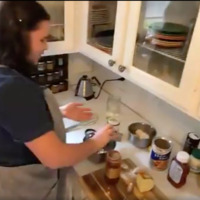
"Minced" virtual southern Jewish cooking competition
The Institute of Southern Jewish Life hosted a virtual cooking competition, "Minced."
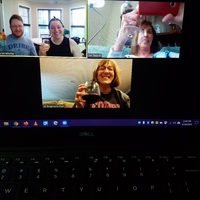
Cousins monthly get together turned into Zoom happy hour in Atlanta!
In March 2020, cousins in Atlanta, Georgia turned their monthly gatherings into virtual happy hours on Zoom.

A Eucharistic altar made of paper
In the beginning of the pandemic, one family leveraged their creativity to create a Eucharistic altar out of paper and tape, complete with a chalice, paten, Book of Common Prayer, and candlestick.
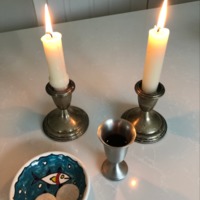
Our Holy Communion Table
This photograph was taken on April 26, 2020 of one family's Holy Communion Table.
Redefining worship
While the COVID-19 pandemic forced many religious institutions to suspend temporarily their in-person worship services, congregations showed resilience and found a way to come together through technology, using popular platforms like Facebook Live, Vimeo, and YouTube:
"We’re connecting in all different kinds of ways and using technology to bring us together." – Rabbi Dana Benson
"Though we can’t wait to meet in person again we are so thankful for technology and the ability to come before God as a group." – Anonymous
"As for community, we have transitioned to an online community. Even though we cannot be physically in a church building, we know that we are linked together by the Holy Spirit." - Anonymous
"While it is extremely difficult to provide a healthy, biblical church environment while distancing, the pastors are recording segments of Sunday services to be sent out weekly by email. These web pages contain several links of videos for hymns, sermons, times of prayer, and encouragements. There are also reading groups and intermittent fasting accompanied by zoom meetings for interested members. The students are also continuing to hold bible studies and other weekly meetings to foster community during this time. It has served as an important lesson to me what faithfulness looks like to a local church even when being ‘local’ is no longer an option." – Anonymous college student
Despite the sudden shift in congregating and communicating, the prevailing message remains that congregations are not alone and they're in the pandemic together. In his first online sermon on March 22, 2020, Pastor Brett Younger reinforced the message that no matter where you worship, God’s always with you: "Whether we worship in person or online, we worship in the presence of God."
Religious institutions across the country adapted their operations quickly and creatively so that they could maintain their communities while also adhering to the COVID-19 safety protocols.
Going virtual
With a lot of states mandating a stay-at-home order, religious institutions quickly shifted gears from in-person worship to virtual worship, which was a new avenue for many religious leaders and congregations. Reverend Susan Fortunato from Christ Episcopal Church Poughkeepsie in New York created an introduction video to update her congregation on their church’s path forward and to talk candidly about her inexperience with going virtual:
There are reoccuring themes of resilience, togetherness, and hope, despite present hardships, across all sorts of congregations, denominations, and states, particularly as religious institutions adapted their worship and community to online. For instance, Peace United Methodist Church in Ohio, started a series called "Minute of Peace" where the church’s leaders and members post short videos that intend to uplift and inspire. Their very first video explains, "Every day, we want to put out a new video just so we can stay connected, we can give you updates with what’s going on in the church, and so we can continue to be a part of each other’s lives." This series not only exemplifies the community’s resilience and adaptability, but it spreads hope, encourages their online audience to keep the faith, and promotes togetherness.
Another person reflected on their experience worshiping online and how this transition to the virtual realm helped their Presbyterian church in Illinois strengthen their attendance, thereby seizing an opportunity to grow their congregation: "We've found a HUGE increase in attendance, and connections every Sunday with people who used to be just Christmas/Easter worshipers. Giving has actually increased, and people are doing a great job of staying connected in so many ways. It's been eye-opening. We've definitely learned that we'll continue livestreaming after the pandemic, and probably should have been doing it all along."
This exhibit talked earlier about how religious leaders are keeping the faith and working to support their congregations in new and creative ways, and in doing so, they’ve softened the loneliness felt by many during the COVID-19 pandemic. The meeting platform Zoom has become popular among many congregations, but most agree that connecting online - regardless of the platform - is better than being alone. A Presbyterian from a small church in Otis Orchards, Washington talks about their gratitude for online worship and community: "We are a small church of about 40 people and it's hard being apart as they become nearly like a second family. We meet daily for a morning prayer session and read some scriptures. Then on Sunday we have out normal church service. All this is through Zoom. It not only strengthens our belief, but also makes us feel not so alone."
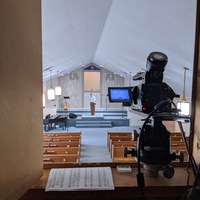
Preaching to an empty room
The Jefferson Park Baptist Church in Charlottesville, Virginia prepares for their online worship service.
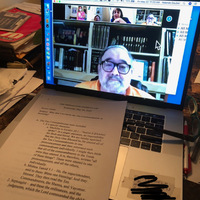
Weekly Torah Class via Zoom
In May 2020, Rabbi Mark Urkowitz taught his weekly Torah class on Zoom for the residents of The Medallion, a Jewish senior care facility in Houston, Texas.
Congregation Beit Simchat Torah's Yom Kippur Neilah Service
Congregation Beit Simchat Torah in New York City livestreamed their Yom Kippur Neilah Service on September 28, 2020.
First United Methodist Church of East Liverpool Facebook posts during March
These Facebook posts from the First United Methodist Church of East Liverpool in Ohio covers COVID-19 procedures, inspirational messages, and livestreams during the month of March 2020.
Suquamish United Church of Christ April Worship Services
The Suquamish United Church of Christ in Poulsbo, Washington posted their worship services on the church's Facebook page during the month of April 2020.
Worshiping together but socially distanced
As states across the country started to reopen, some congregations started to gather in person but socially distanced, taking advantage of outdoor spaces during the summer and fall months. From chairs spaced at least six feet apart outside, to masks and face coverings, religious institutions continued to persevere, adapting their practices and demonstrating their resilience.
One user shared their feeling of hope once their church was able to resume in-person worship services outdoors in Minnesota: "When COVID shut everything down it made me feel lost and I did not know what to do. When they started doing online services it felt better but just was not the same. After everything was settling down they opened up an outdoor service which was amazing and brought many people together! During all this chaos I learned how to pray better and use this time to connect with Jesus more which made me feel more grateful."
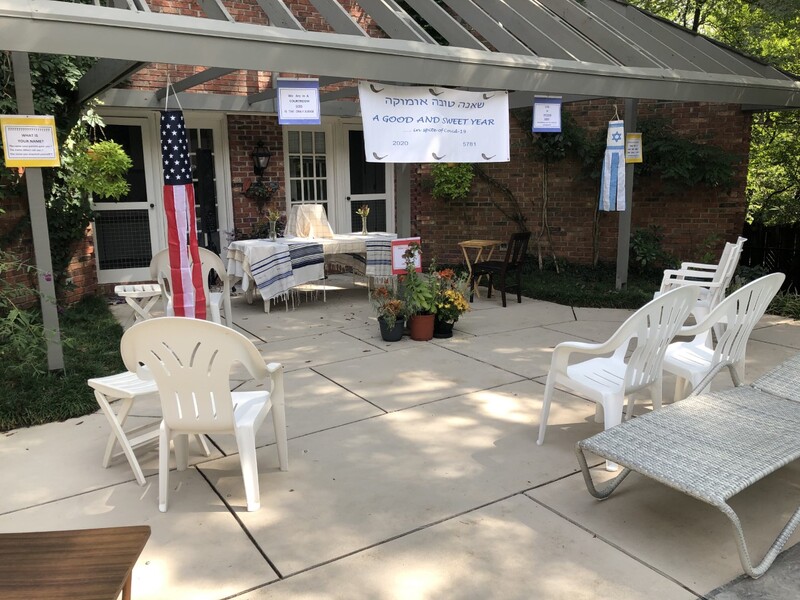
Rosh Hashanah
This photograph, taken on September 18, 2020, captures one person's socially distance, outdoor Rosh Hashanah service.
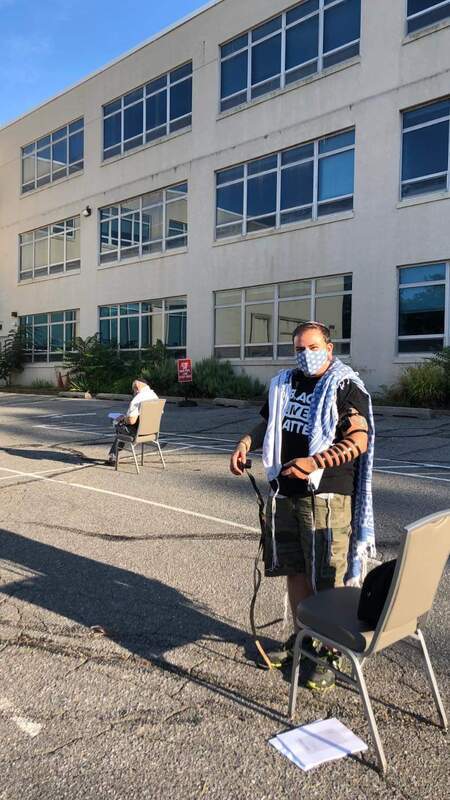
Matching Tallis and mask during a socially distanced minyan
A man wears a matching Tallis and mask during a socially distanced minyan for Rosh Chodesh Elul.
Celebrating the holidays
The COVID-19 pandemic rooted across the country around the time when Christians were celebrating Easter, Jews were celebrating Passover, and Muslims were celebrating Ramadan, to name just a few holidays. Trying to celebrate amidst such uncertainty and isolation proved challenging, but adaptability and resilience prevailed, and the end result was nothing short of creative beauty.
An agnostic/atheist college student reflected on their Jewish family celebrating Passover physically alone, yet this student’s family made the most of the moment and celebrated with their entire family virtually via Zoom:
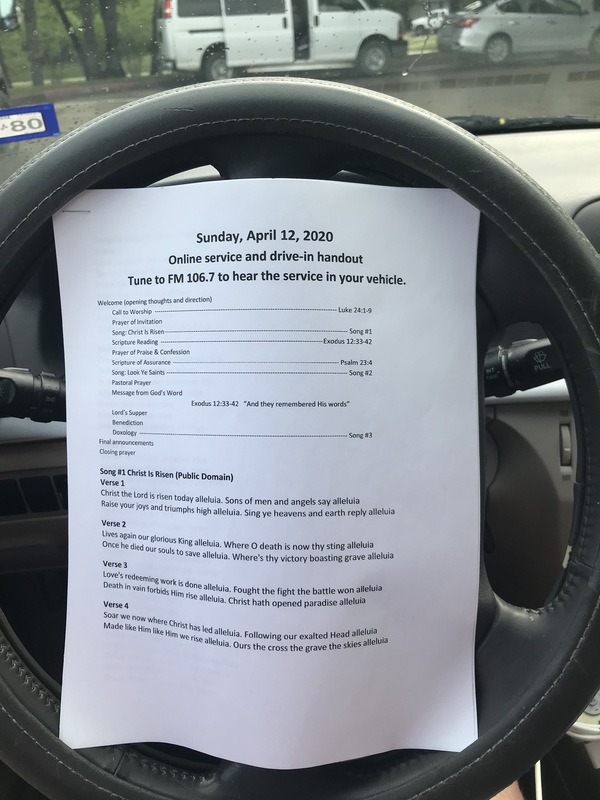
Easter from behind the steering wheel
An Easter bulletin propped up against a steering wheel during a drive-up worship service on April 12, 2020.

Holy Thursday Agape Meal
An Episcopalian's Holy Thursday Agape meal at home during an online church service.
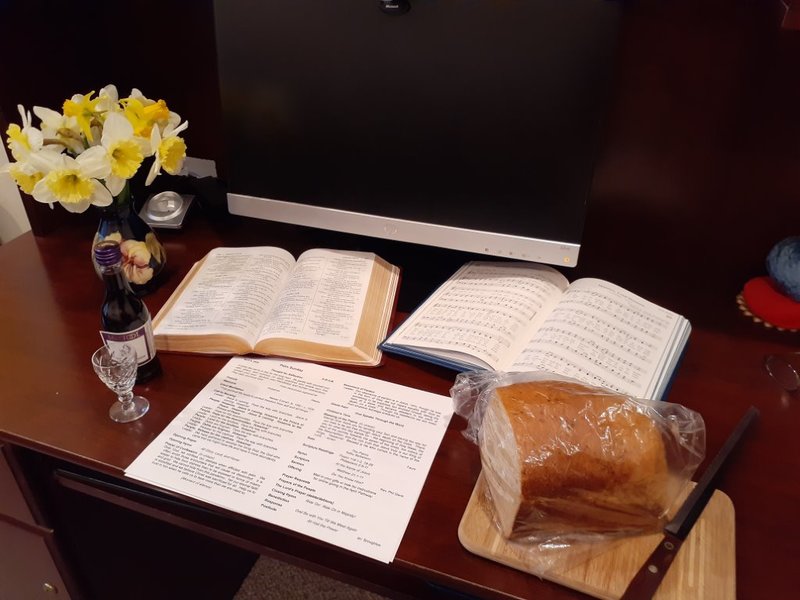
Home Communion Table for Zoom Worship
This home communion table is set up and ready for the Webster Presbyterian Church's online Palm Sunday worship service on April 5, 2020.

Institute of Southern Jewish Life Pass(over) the Seder Plate Video
This video is from the Institute of Southern Jewish Life and celebrates Passover with a virtual passing of the Seder plate.
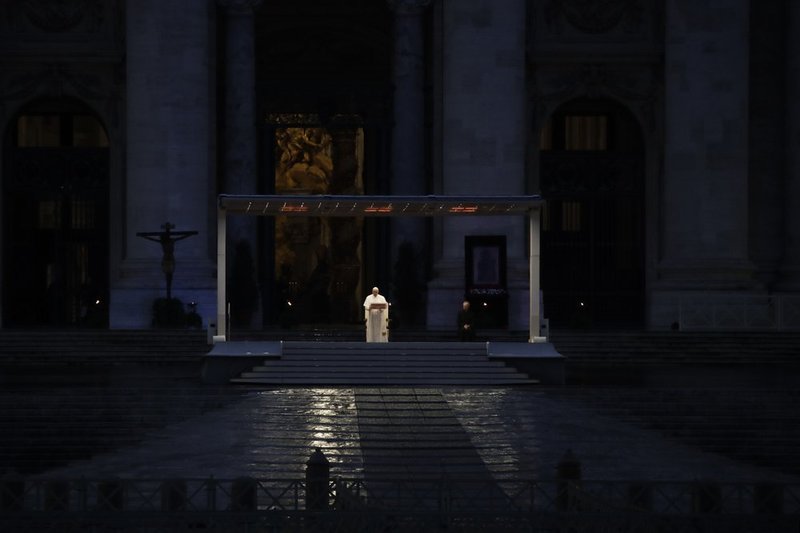
Lent in the Time of Pandemic
During Lent, Pope Francis stood alone in St. Peter's Square on March 27, 2020 as he talked about the COVID-19 pandemic.
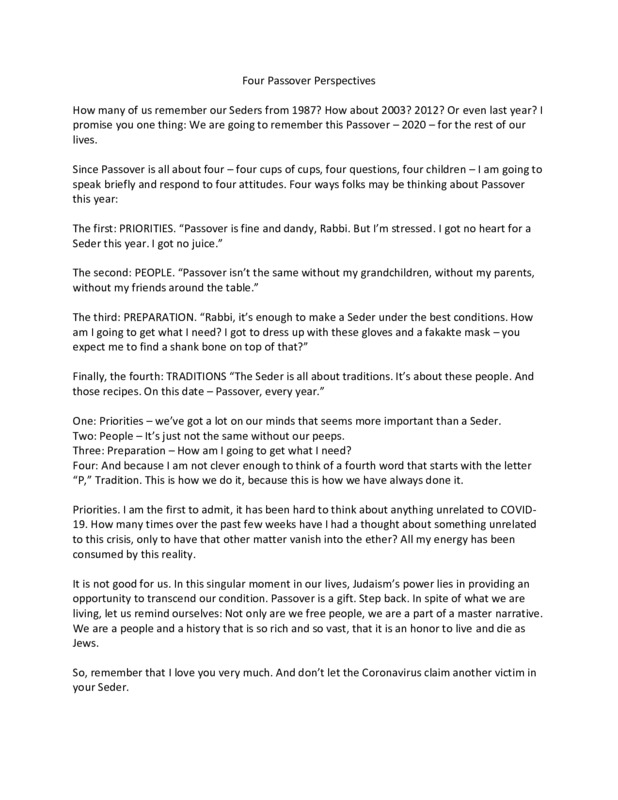
Passover in a Time of Coronavirus
This essay, written by Rabbi David Spinrad from the Beth El Hebrew Congregation in Alexandria, Virginia, talks about how Passover looked different in 2020 due to the COVID-19 pandemic.
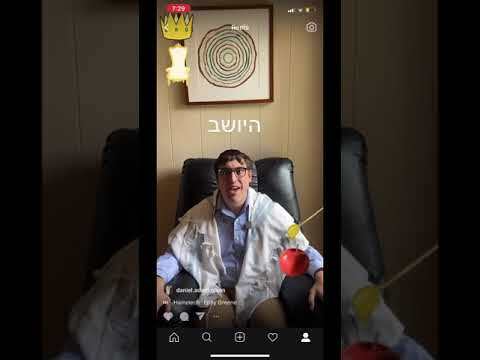
Rosh HaShanah services in under three minutes
Using Instagram Reels, a social media platform similar to TikTok, this video quickly captures Rosh HaShanah services.

Seder Plate for Virtual Seder
Karen Levi took a picture of her Seder plate for virtual Seder, drawing pictures of the items that she was unable to buy due to limited supplies in April 2020.
Connecting through music
In a lot of congregations, music and worship are integral parts of the religious experience. When religious institutions closed their doors, it not only left a void in the physical worship but also the musical one. One musician from a Methodist church in Houston, Texas mourned this loss of worship, both the physical worship and the musical one, and expressed the difficulty in staying engaged:
But as with so many things surrounding COVID-19, religious institutions found a way to connect with their congregations and engage in the power of music virtually. Some congregations embedded music in their weekly virtual worship services; others pre-recorded choirs through meeting platforms like Zoom; and yet others merged individual musician videos into one collage of musicians. The end products are beautiful and quite moving, demonstrating, yet again, an admirable resilience across the country.
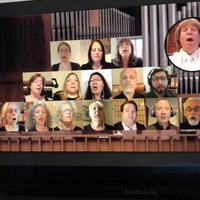
High Holidays on Zoom, including Zoom Choir
The Bethesda Jewish Congregation Choir in Maryland performed via Zoom for Yom Kippur on September 28, 2020.
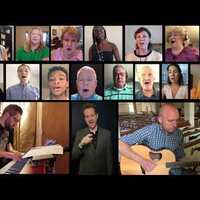
May The God Of Hope Fill You (Romans 15:13)
Andrew Cote from the Truro Anglican Church in Fairfax, Virginia wrote an original piece performed in June 2020 by the church's choir.

"God Be With You Till We Meet Again"
The First Parish Church in Weston, a Unitarian Universalist in Massachusetts, performed "God Be With You Till We Meet Again" in June 2020.

Y'hi Ratzon -- Safe Together Apart
This is an original song written by Jack Chomsky, Cantor at Congregation Tifereth Israel in Columbus, Ohio.
Supporting the youth
As difficult as the COVID-19 pandemic has been for adults, it’s been equally difficult for the country’s youth, so religious institutions have tried to create virtual outreach, community, and support. From online youth camps, to inspirational videos, congregations have worked to include their younger audiences, continuing to spread those messages of hope, togetherness, and love.

#dynamicdayschools videos
This video is a collection of the ways in which teachers and students in Jewish Day Schools transitioned to online learning amidst the COVID-19 pandemic.
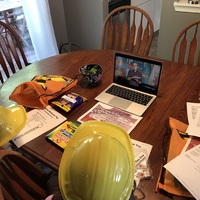
Online and socially distanced church camp
This photograph captures an adolescent's online church camp experience.
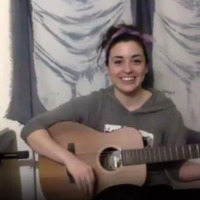
Virtual Havdalah
Capital Camps hosted their first Virtual Havdalah in May 2020, which connected with families via Zoom and Facebook Live.
Final thoughts
As a historian, it’s a quirky shift to capture history in real time. Usually we’re looking back, collecting artifacts, analyzing the data, and trying to fill in the gaps. With the COVID-19 pandemic, we’re doing all of those things, but we’re also living through it. There have moments that have felt quite hopeless and dark and heavy during this pandemic, but what this project has collected over these past few months is the opposite of hopeless and dark and heavy. Pandemic Religion has captured a collective resilience, an ability to move forward, and an innate desire to help others, which, in the end, spreads hope and keeps the faith.
The pandemic shook a lot of religious congregations, particularly with the sudden suspension of in-person services, but perseverance and dedication have created hope and sustained communities during a challenging historical moment. It’s been a pleasure to read through personal reflections, watch intimate videos of leadership connecting with their congregations, and see the creativity that has allowed so many to remain flexible and connected during an otherwise rigid and disconnected time.
